
Producing a book about birds and nesting is a dangerous business. First of all, there is the cuteness factor. The truth is that there are few images cuter than baby birds in the nest opening their mouths and begging for food, but there are curmudgeons amongst us, myself included, who don’t like to admit this. We simply refuse to squee. Second, reading about birds courting and parenting brings out the tendency to identify, which leads directly to anthropomorphism, the tendency to assign birds human emotions and thoughts. Some people love books like that. I don’t. Think of birds too much as humans and you lose the specialness that makes them birds. Third, observing and photographing breeding birds and their young have become acts of ethical confusion as birders, photographers, and organizational representatives debate the impact of our human presence on the nesting process.
Yellow Warbler fledgling. Not cute. But special.
I’m happy to say that Laura Erickson and Marie Read have written an excellent book, Into the Nest: Intimate Views of the Courting, Parenting, and Family Lives of Familiar Birds, that is not too cute and that does not anthropomorphize. Which is not to say that it doesn’t contain striking images of birds parenting the most adorable songbirds, owls, and heron nestlings imaginable. (Oops, the curmudgeon in me slipped.) It does. And of birds courting and mating. And of eggs and nests and birds on nests. I wouldn’t expect less of Marie Read, one of the best bird photographers in the U.S.
And, this is not to say that Laura Erickson, well-known birding author, blogger, speaker, and much more, doesn’t write about bird behavior with lucid, accessible prose. She does, and her narrative serves as a role model for how to write about birds simply and knowledgeably; informing birds’ family stories with scientific facts and research findings. Both authors marvel at the diversity of birding reproductive and parenting behavior. In the all too brief introduction to the book, they state, “This book aims to shed light on the family lives of birds, a topic that has captured our collective imagination and enriched our language despite being shrouded in mystery.”
Peregrine Falcon nests
Into the Nest, as the title says, is about the courting, mating, egg-laying, nesting, and parenting behavior of “familiar birds”. Familiar is not necessarily common. So, the 49 subject species include birds with interesting family behaviors that we might not see every day (Cedar Waxwing, Great Blue Heron, Peregrine Falcon), migrant songbirds (Tree and Barn Swallows, House Wren), and common, everyday birds (Northern Cardinal, Downy Woodpecker, and, yes, Rock Pigeon). Some chapters focus on one species (Yellow Warbler), some on several related species (Chickadees and Nuthatches). Most of these species can be found throughout the United States and Canada, and when they’re not, pains are taken to balance each Eastern species with a Western species. Photos of birds from northeastern areas predominate, not surprisingly since photographer Marie Read lives and works in upstate New York. But, there are Western images too, such as the delightful series on a Western Tanager nest.
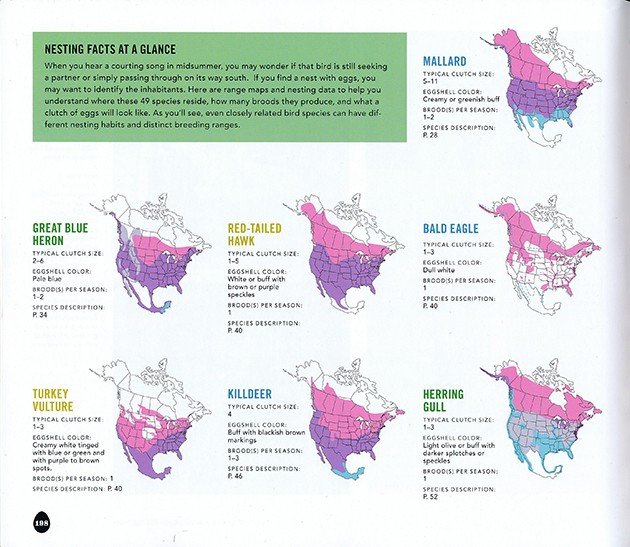
The book is divided into three parts. “Part One: The Facts of Bird Life” introduces the basics of avian courting and mating, egg laying (called more poetically Enter the Egg), and nesting and parenting, introducing concepts such as precocial chicks (born with thick down, ready for independent living) and altricial nestlings (born naked and dependent) to the those of us who never took biology. “Part Two: The Family Live of Selected Species” describes and illustrates the family lives of 49 species in 25 chapters. The Appendix is comprised of Nesting Facts At A Glance–ranges maps and nesting data for each subject species; a Glossary of the ornithological terms used; diagrams of bird anatomy; an index to bird species and behavior; and photo credits for the photos not taken by Read (about 132 out of roughly 400). It’s one of those books that look like fun to read, is fun to read, but is actually very educational.
Western Tanager nest
Photographs and text are totally integrated; you can’t get the whole story without reading the text, observing the photos, and reading the extensive captions. The photos, focused and closely cropped, are composed to tell the reproductive story. We see an adult Yellow Warbler singing to attract a mate, a female Blue Jay on a nest hidden in a shrubbery, a Western Tanager nest at 8 days, 9 days, and ready to fledge, a House Wren removing a fecal sac, juvenile Red-tailed Hawks practicing flight. There are photos that catch the eye for their beauty or their unique approach, and tell you that there is are artists at work here too. My favorite is the Yellow Warbler fledgling above, who still has tufts of down on his head. The bird stares into the camera with a naive insolence. (No, that’s not anthropomorphism, this bird simply has personality.)
Cedar Waxwings exchange berries, carry nesting material, eggs
The book also utilizes what I call information-nugget-boxes: a series called Family Secrets (Cedar Waxwings cooperatively share berries), and a series of colored boxes offering species-specific facts and stories (House Wren and Bewick’s Wren as competitors for breeding territory in the Appalachian Mountains, with House Wren winning out, puncturing the eggs of its competitor). Although I generally like this type of graphic/information design, the number of boxes here sometimes seems to overpower the narrative text. I imagine the conundrum for the authors was how to organize everything they wanted to tell us about each bird in a way that was uniform and which also embraced each species’ uniqueness.
Egg biology, from Part I
Each species chapter describes how the bird finds mates, creates nests, lays eggs, feeds nestlings, and other parenting behaviors. Information is often highly detailed. Descriptions of egg laying, for example, include number of eggs in a clutch, time it takes to lay a clutch, sometimes the temperature of embryos at the start of incubation, time spent each day incubating the eggs, which parent incubates the eggs, what the mate or helpers are doing during incubation period, which parent develops a brood patch, and rate of hatching. Attention is also paid in several chapters to cowbird parasitism, which species have protective measures against the egg dumping and which species are susceptible. Brown-headed Cowbird itself gets its own section in the Blackbirds and Orioles chapter.
Northern Flicker eggs in nest and nestlings
There is so much interesting material here. American Crows live in extended families, with sons and daughters from previous years helping to raise the current brood. Flickers are indeterminate layers; if one egg is removed from the nest, the female lays another. And another when that egg is removed. The female Cardinal sings while inspecting potential nest sites. Yellow Warblers are able to recognize Cowbird eggs, and if conditions are right will build a new nest floor on top of the egg and their own eggs, burying them. The stretch displays of Great Blue Herons, in which the female stretches up her neck to accept a stick from the male for the nest, stimulates hormonal levels. Herring Gulls are unusually monogamous.
These are facts many birders probably know. Field guides offer little information on birds’ reproductive lives unless there is an identification component, but handbooks such as The Sibley Guide to Bird Life & Behavior (2001) talk extensively about courting and breeding behavior. The advantages of a book like Into the Nest are its exclusive focus on family life, the specificity of its information (not every entry in the Sibley Guide tells you the size of the bird’s clutch nor the color of the eggshell), and its photographs. Of course, Sibley’s is comprehensive and Into the Nest is selective, the comparison is a little like comparing apples and oranges. I did want to point out that though Into the Nest is oriented towards a more general nature-loving audience, there are features here of interest to “birders”.
Laura Erickson and Marie Read are a terrific team. They share a work history of time spent working at the Cornell University Laboratory of Ornithology. Erickson has a multi-page resume as birding writer, blogger, columnist, editor, teacher, speaker, radio show host, field trip leader, and, most recently, social media presence (and, yes, we are Facebook friends). She excels in bridging the ornithological, birding and larger nature-loving-but-not-obsessed communities as only a birder with roots in teaching can (she was also an elementary and junior high school teacher, according to her biography). Her seven books include 101 Ways to Help Birds (2006), The Bird Watching Answer Book: Everything You Need to Know to Enjoy Birds in Your Backyard and Beyond (2009), and the National Geographic Pocket Guide to the Birds of North America (with Jonathan Alderfer, 2013).
Marie Read’s photographs first came to my attention through her photographs and articles in Living Bird, the magazine of the Cornell University Laboratory of Ornithology. Read worked for the Lab of O for eight years before becoming a fulltime nature photographer and writer, and her brief article on their website, Give Your Bird Photos Soul, should be required reading for every birder/photographer. Her books include Secret Lives of Common Birds: Enjoying Bird Behavior Through the Seasons (2006), and Sierra Wings: Birds of the Mono Lake Basin (2014, with David W. Winkler and Justin Hite).
You may have noticed that of the three difficulties I listed in the beginning of this review, I’ve only discussed two. I do wish Read had included a section about how she photographed the birds of Into The Nest. She touches on the importance of not intruding on nesting birds in her talk, with Erickson, at the Cornell Lab of O last month, and in her BirdWatching magazine article on photographing Black Terns in upstate New York. With the explosion of affordable zoom cameras and social media platforms for exhibiting photographs and uninformed people doing bird photography, we can’t have enough emphasis on ethical birding and bird photography and why it needs to be a priority.
Into the Nest: Intimate Views of the Courting, Parenting, and Family Lives of Familiar Birds is a book for nature enthusiasts, nature photography fans, teachers, parents, and yes, even birders. A lot of scientifically-based information is packed into its pages, and its design makes it a book that can be read sequentially, browsed, or even used for reference. The photographs by Marie Read and contributing photographers (including Laura Erickson) are joyful depictions of the secret and not-so-secret private lives of birds (and that’s not anthropomorphic, it’s just that you can’t see what’s going on in a nest 10 feet above your head or in a tree). In the time of nesting, it’s good to actually know how that Mallard or Tree Swallow or Northern Cardinal got to that nest and what it will be doing over the next few days or weeks or year. And then, to pass that information on to the child or birding newbie next to you.
——-
Into the Nest: Intimate Views of the Courting, Parenting, and Family Lives of Familiar Birds
by Laura Erickson & Marie Read
Storey Publishing, April 2015.
208 pages; 8.4 x 9.7 x 0.7 inches.
ISBN-10: 1612122299; ISBN-13: 978-1612122298
Paperback, $16.95 retail; also available in Kindle ($9.95) and iBook formats.
All photographs used in this review are from Into the Nest, they are by Marie Read or the photographers credited on page 207.


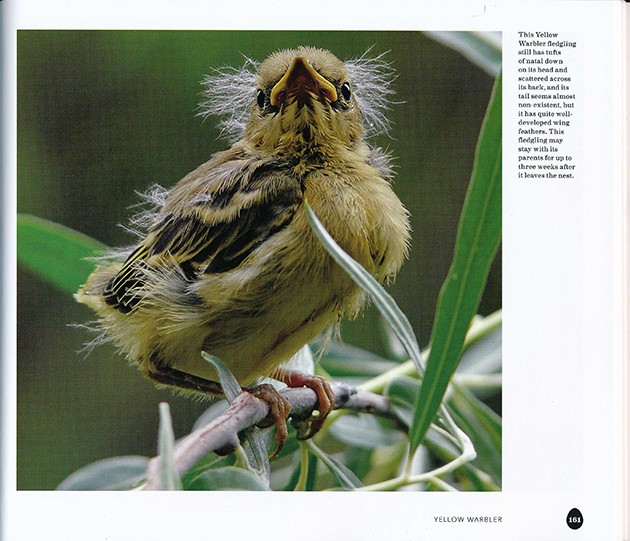
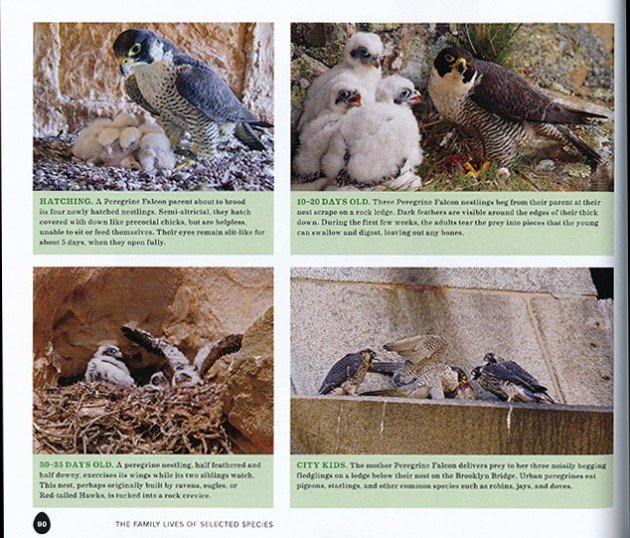

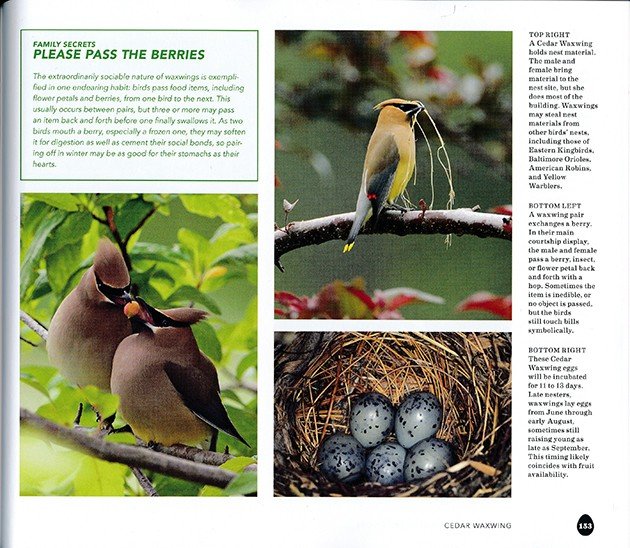
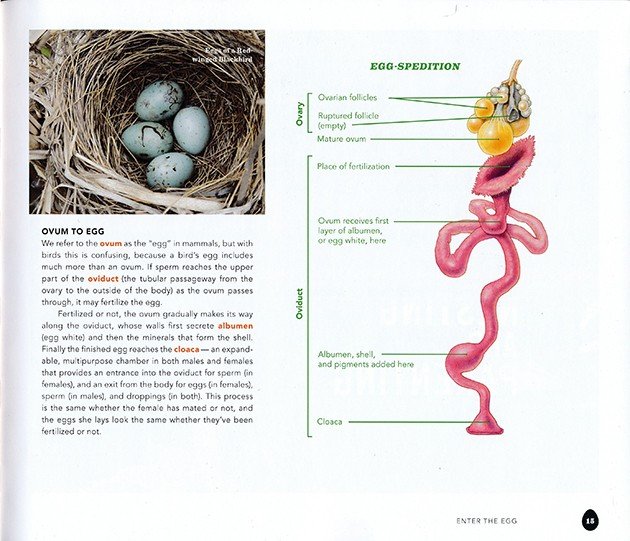
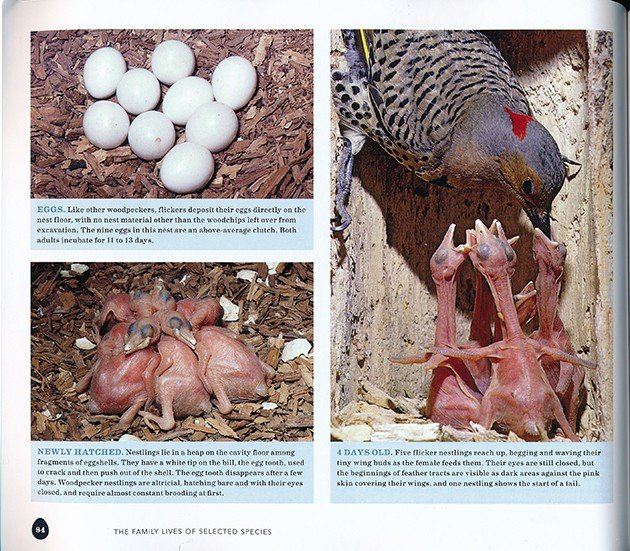











Another scintific snob. Oh, the horrors of anthropomorphism. Crawl back into your hole and let ordinary folks learn to love wildlife by relating to the creatures as living beings with emotions and miens that make humans smile and identify.
I think you completely missed the entire point of this review.
L. Hoffman, as I hope I made clear in the review, anthropomorphism (and love of the cute) is hard to avoid. And that’s a good thing, because it helps people enjoy wildlife and want to protect them and engage in conservation. But, I think it is also important to recognize that birds and other wildlife have features and needs different from ours. Observing and documenting these needs inform conservation plans for saving endangered species. and familiar ones as well.
When I observe a House Wren removing a fecal sac from a nest house, as I just did this afternoon, I marvel at her (or his?) good housekeeping. That’s anthropomorphism. I also know that this behavior helps produce healthy young, continuing the species. That’s science. The two are not necessarily exclusive. I do think there needs to be a balance and that good books reflect that.